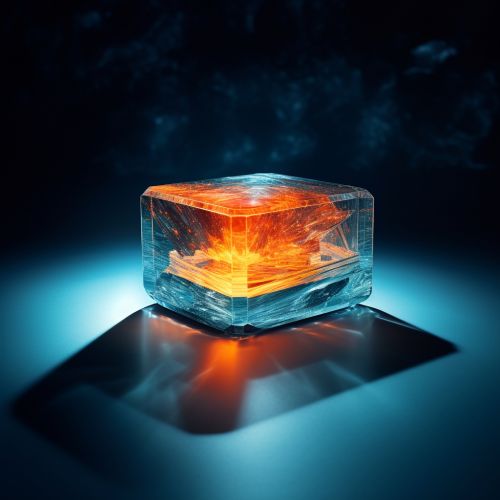Strontium
Introduction
Strontium is a chemical element with the symbol Sr and atomic number 38. An alkaline earth metal, strontium is a soft silver-white yellowish metallic element that is highly chemically reactive. The metal forms a dark oxide layer when it is exposed to air.


History
Strontium was first isolated as a metal in 1808 by Sir Humphry Davy using the then newly-discovered process of electrolysis. Prior to this, it was recognized in the mineral form strontianite in 1790 by Adair Crawford and William Cruickshank.
Characteristics
Physical
Strontium is softer than calcium and decomposes in water more vigorously. It does not absorb nitrogen below 380 °C. It should be kept under kerosene to prevent oxidation. Freshly exposed strontium has a silvery appearance, but rapidly turns a yellowish color with the formation of the oxide.
Chemical
The chemical properties of strontium are largely intermediate between those of calcium and barium. Strontium reacts with water, but not as vigorously as calcium, strontium and barium. With oxygen, strontium forms strontium oxide directly.
Occurrence
Strontium commonly occurs in nature, averaging 0.034% of all igneous rock and concentrating in sedimentary rocks to 0.075%. It is the 15th most abundant element on Earth, and the third most abundant metal in seawater.
Production
Strontium is obtained commercially mostly from the mineral celestite. It is mined in China, Mexico, Iran, Turkey, and Spain. The metal can be prepared by electrolysis of the fused chloride mixed with potassium chloride, or is made by reducing strontium oxide with aluminum in a vacuum at a temperature at which strontium distills off.
Applications
Strontium has uses in the field of electronics and other high-tech industries. It is used in producing ferrite magnets and refining zinc. Strontium titanate has an extremely high refractive index and an optical dispersion greater than that of diamond, making it useful in a variety of optics applications.
Biological role and precautions
Strontium has been found to have a significant effect on the health of the human body. It is absorbed by the body in a manner similar to calcium, and can replace calcium to some extent in various biochemical processes. Strontium ranelate is a medication that can increase bone formation and decrease bone resorption, and is used to treat osteoporosis.
